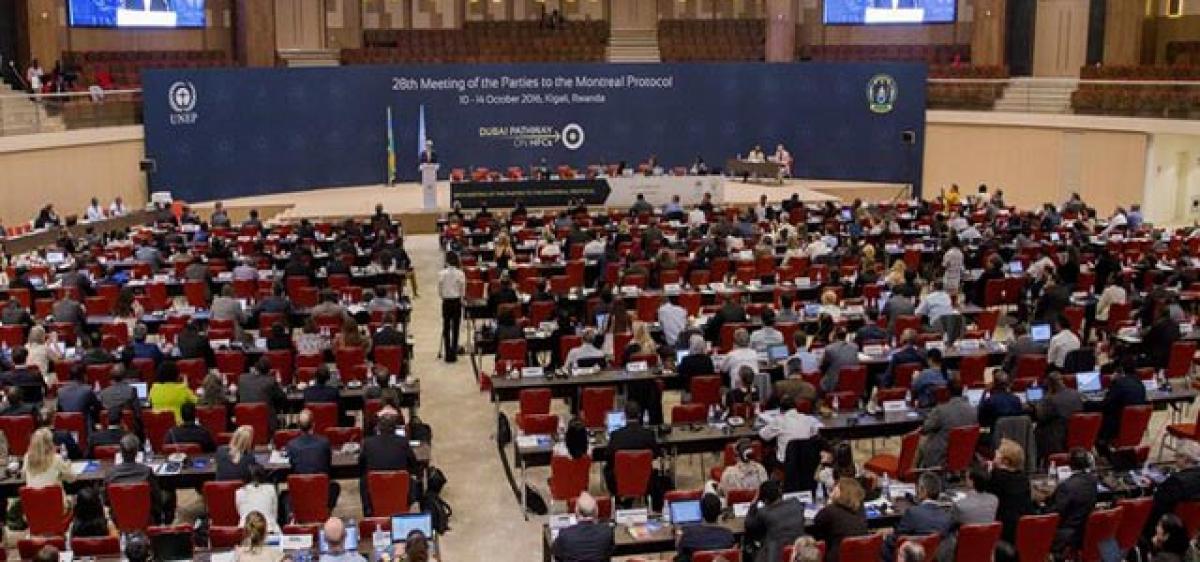Live
- India's growth on resilient trajectory, equity markets in consolidation phase
- KJo on 23 years of ‘Kabhi Khushi Kabhie Gham’: One of those pinch me moments
- WPL 2025 auction: Nandini, Kamalini set to be most sought-after names
- MP CM to inaugurate Sarsi resort in Shahdol, 200-bed hospital in Mauganj today
- TGPSC makes arrangements for Group-2 exams to be held tomorrow
- WPL 2025 Auction: When and where to watch, date, time, live streaming, venue
- Japan: Citizens protest US military-related sexual violence
- Buy on dips strategy working well in Indian stock market amid sharp rebound
- Sri Lanka concludes sovereign bond restructuring
- Lal Krishna Advani hospitalised at Delhi's Apollo Hospital
Just In

Clayton Christensen, a professor at the Harvard Business School, wrote in the Harvard Business Review in 1995 about the concept of \'disruptive innovation\'.
Clayton Christensen, a professor at the Harvard Business School, wrote in the Harvard Business Review in 1995 about the concept of 'disruptive innovation'. He described it as “a process that takes root initially in simple applications at the bottom of a market and then relentlessly moves up market, eventually displacing established practices”.
The term has since then gone beyond just business and the markets and engulfed the whole gamut of the societal and environmental transformation. It is now termed the process that disrupts the well-established practices by game-changing operations that move from bottom to the top of society for sustainable and better living.
Last week delegates from 197 countries in an international negotiating conference on the Montreal Protocol -- a multilateral environmental agreement (MEA) -- sparked such disruptive innovation at an unlikely place -- Kigali, the Rwandan capital -- and under the auspices of an environmental off-shoot of the UN more known for its glacial speed of responses to the global crises.
The disruptive innovation stems from the fact that the treaty under which the commitment was agreed was not originally sculpted to reduce emissions of green house gases (GHGs). Thus, ‘The Montreal Protocol on Substances that deplete the Ozone Layer' was virtually enshrined with a new tag: 'The Montreal Protocol on substances that do not deplete the ozone layer’.
This signals not only a name change but also a game-changing operation for the betterment of the planet. It has heralded disruptive innovation in the well-established UN practice of never-crossing-the-mandate. Never ever before in the history of a MEA and even in the history of the UN has such social and environmental innovation taken place that stemmed from bottom up from countries.
MEAs are global treaties negotiated to address global environmental issues. Scientific postulations, observations, degrees of environmental and economic impacts as well as threat to the habitat are the drivers of such global negotiations. Differing abilities to perceive the environmental crisis and the unequal capability to deal with its impact as well as transformation to alternative policies and technologies are the major stumbling blocks in the negotiations.
The suspicion or the real existence of hidden agendas, mistrust and politics complicate the negotiations, which become notoriously and excruciatingly slow. Each agreement is confined to its mandate and countries zealously guard this. Even worse, a final agreement is arrived at after long serpentine multilateral negotiations and compromises are no assurance for its effective implementation as amply exemplified by the Kyoto Protocol of 1997.
The Montreal Protocol radiates exceptional success that stands out as one of the rare examples of what the UN is capable of achieving. Copy-book style negotiations under the Montreal Protocol, closely supported by global scientific assessments by top-notch irrefutable scientists, were strengthened with principles of common but differentiated responsibility, precautionary approach and polluter-to-pay issues.
Convened under the United Nations Environment Programme (UNEP), the Protocol, signed in 1987 which entered into force in 1989, has succeeded in wiping out nearly two million tons of man-made ozone depleting substances (ODS) that were being produced and consumed annually in the 1990s.
Chlorofluorocarbons (CFCs) used in refrigeration, air-conditioning, hair sprays, insulating foams and fire protection, along with more than 90 other ozone depleting chemicals, have been wiped out from planet Earth within a space of one generation. Mildly ozone depleting chemicals -- HCFCs (hydrochlorofluorocarbons) -- which constitute less than one percent of total ODS remain to be phased out.
A MIT study says there already are early signs that the ozone layer has started recovering and is likely to come to its pre-depletion level by 2050. The world has created an example of 'handing over the natural heritage to the next generation, in same state as was received from our earlier generation'.
In Kigali, countries have decided to use the Montreal Protocol along with its mechanisms as a vehicle to phase-down HFCs and went beyond the mandate of the original Protocol and accepted the legally binding agreement to mitigate the emissions of GHGs. They expect the Protocol to deliver much needed reduction of 0.5 degrees Celsius of warming by the end of the century, bringing the maximum total warming of 1.5 degrees within reach. It is virtually impossible to deliver that under the Paris Agreement.
The countries also want to derive the benefit from this transformation away from HFCs to get more energy-efficient and even super-efficient air-conditioners to save energy, save costs, reduce pollution and derive health benefits. To that end, Kigali has demonstrated that Silicon Valley, where the concept originated, doesn't have a monopoly on disruptive innovation. (The author is an IIT-alumnus and Chairman, TERRE Policy Centre)
By Rajendra Shende

© 2024 Hyderabad Media House Limited/The Hans India. All rights reserved. Powered by hocalwire.com







